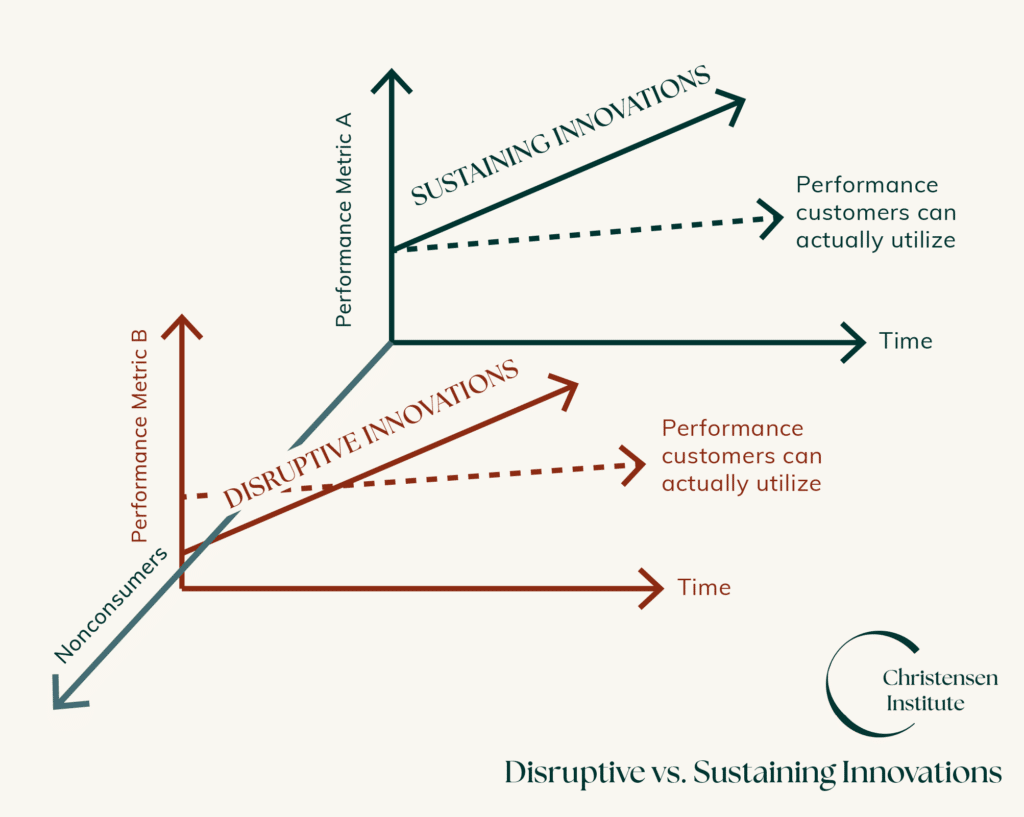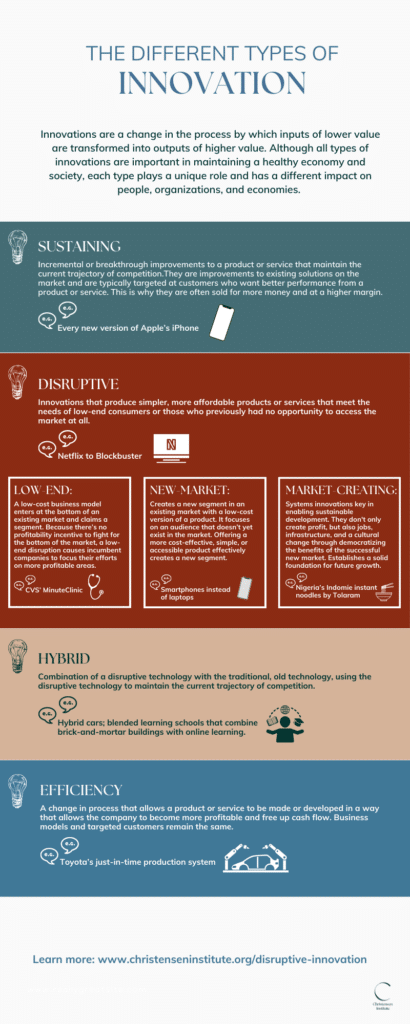Disruptive Innovation Theory
The theory that influenced Steve Jobs, Jeff Bezos, and Andy Grove.

Definition
Disruptive Innovation describes a process by which a product or service takes root in simple applications at the bottom of the market—typically by being less expensive and more accessible—and then relentlessly moves upmarket, eventually displacing established competitors.
Coined in the early 1990s by Harvard Business School professor Clayton Christensen, the term has become virtually ubiquitous from Wall Street to Silicon Valley. Consequently, it’s also one of the most misunderstood and misapplied terms in the business lexicon.
Disruptive vs. Sustaining Innovations

Unique Insight
Disruptive Innovations are NOT breakthrough technologies that make good products better; rather they are innovations that make products and services more accessible and affordable, thereby making them available to a larger population.
Explainer
What makes an innovation disruptive, and what are some examples of disruptive innovations throughout recent history? Check out our helpful video.
Case Studies
Helpful Tools
Infographic: Is it really disruptive?
To determine whether a product or service is disruptive relative to something else, ask these six questions, each of which indicates a potential disruption. Click the image to download and check out our resource library for additional content.
- Does it target nonconsumers or people who are overserved by an incumbent’s existing offering in a market?
- Is the offering not as good as an incumbent’s existing offering as judged by historical measures of performance?
- Is the innovation simpler to use, more convenient, or more affordable than the incumbent’s existing offering?
- Does the offering have a technological enabler that can carry it upmarket and allow it to improve?
- Is the technology paired with a business model innovation that allows it to be sustainable?
- Are existing providers motivated to ignore the new innovation and are not threatened at the outset?
Infographic: The different types of innovation
Innovations are a change in the process by which inputs of lower value are transformed into outputs of higher value. Although all types of innovations are important in maintaining a healthy economy and society, each type plays a unique role and has a different impact on people, organizations, and economies.
At the Clayton Christensen Institute, we’re using the theory of Disruptive Innovation to:

Reimagine K12 and higher education
In the US, our traditional models of education are outdated, leaving too many learners behind, disengaged, and ill-prepared for the future of work. How do we ensure that our systems expand access to a personalized and affordable education so that everyone has access to a choice-filled life?

Consider new models of health care
Traditional health care isn’t structured or incentivized to create health. Yet, historical business models, ways of delivering care, and misaligned incentives prevail across the US today. How can new, innovative business models and policies address the root causes of poor outcomes, creating better lives for individuals and communities?

Expand and support global prosperity
Most people in the world are struggling to access housing, health care, credit, food, water, and energy. How can investors, communities, and governments support innovations that have the power to transform complex services and expensive products into simple and more affordable ones to a greater number of people?













